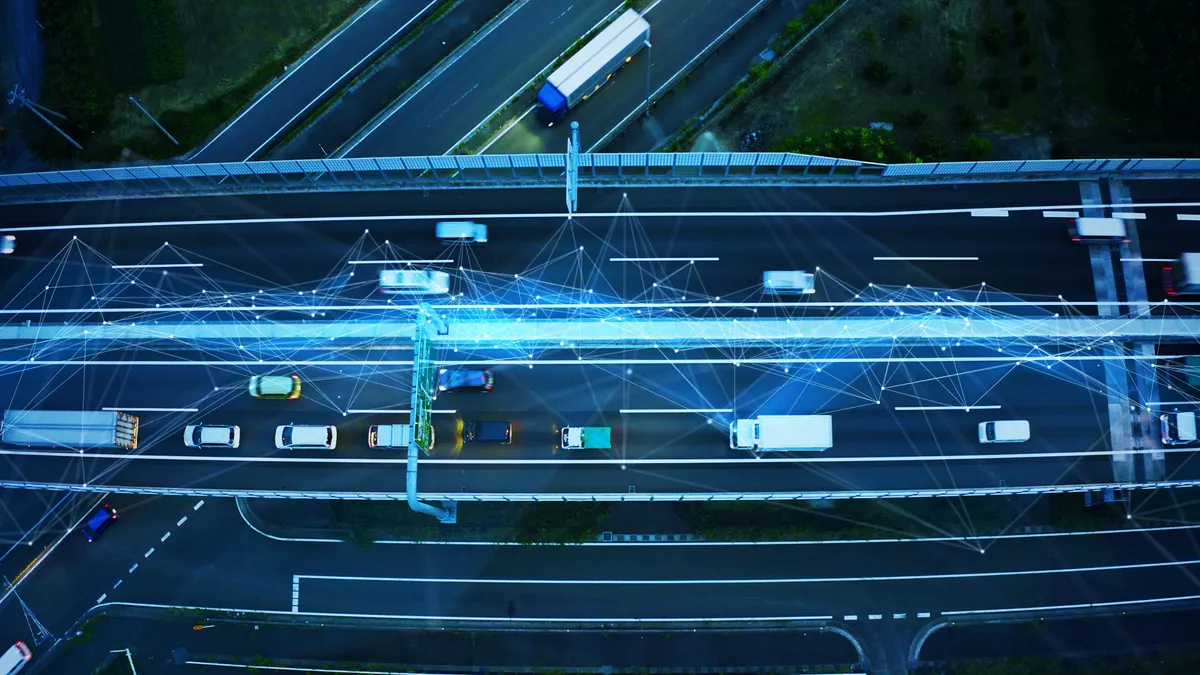Connected vehicle and smart sensor technologies are advancing at the same time 5G wireless networks are growing, making it possible for companies to develop applications to enhance transit and traffic safety and efficiency. Panasonic is one of 14 corporate and government entities that received approval in May from the Federal Communications Commission to use previously reserved radio spectrum for connected vehicle applications. Smart Cities Dive spoke with Panasonic to learn more about its efforts so far in Colorado, Utah and Georgia.
Panasonic’s Smart Mobility office, based in Denver, is focusing on these intelligent mobility solutions. “We’re really looking at … real-world innovations that can create value for our existing smart mobility partners and businesses and actually impact the larger world,” said Courtney Ehrlichman, head of strategy at NextLab, one of three business units within the Smart Mobility office.
In 2015, NextLab developed a vehicle-to-everything, or V2X, platform, which it calls Cirrus. One year later, Panasonic announced a partnership with the Colorado Department of Transportation on a pilot program to connect CDOT vehicles with roadside sensors along Interstate 70 between Golden and Vail, Colorado.
“We offer a central data management platform which helps DOTs and cities launch use cases for connected vehicle technology that can provide near-time benefits,” explained Chris Armstrong, vice president of products at Panasonic Smart Mobility. He said many of those applications are at intersections, where sensors can provide signal priority for transit vehicles and signal clearing for emergency vehicles.
Panasonic followed that project with a partnership with the Utah Department of Transportation to install intelligent sensors along portions of the state’s highways. These sensors automatically generate alerts relayed to UDOT vehicles, traffic signals, roadside electronic message boards and UDOT personnel.
Georgia is working with Panasonic on a pilot program to create an intelligent highway along 18 miles of Interstate 85. The Georgia Department of Transportation is using that road as a “proving ground” for a V2X platform monitoring road conditions. That program has now expanded to a second highway and about 500 intersections in Atlanta, Armstrong said.
As part of these programs, Panasonic has equipped transit buses, ambulances, fire trucks — and, in Utah, snow plows — to communicate with roadside transmitters, Armstrong said. “We’re also trying to help DOTs prepare for a more connected future both on their infrastructure side and on the vehicle side,” he said.
Panasonic hopes these real-world projects will demonstrate use at scale, Armstrong said, and “that cities and states will be much more prepared as the rollout of new vehicles become connected and they have an opportunity to manage safety and mobility much more effectively.”












